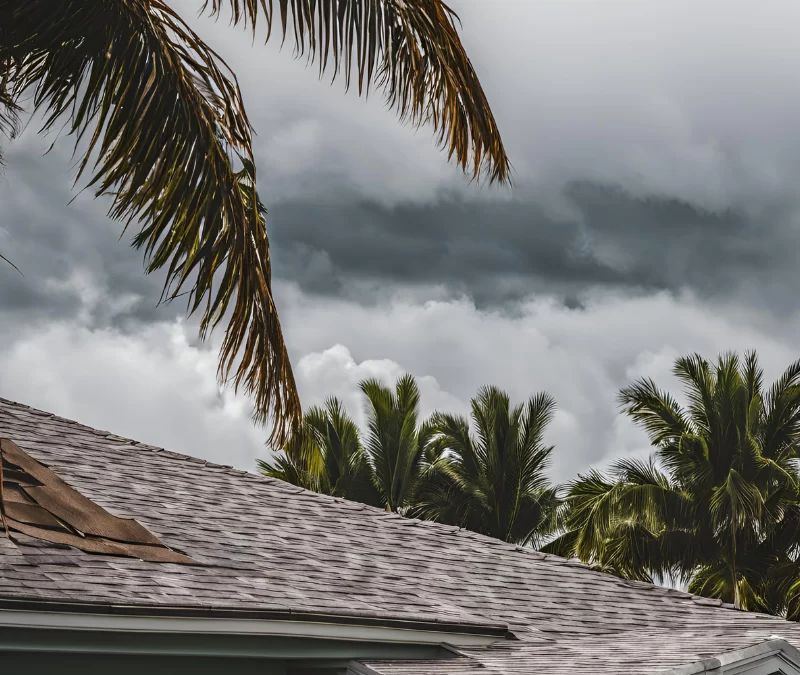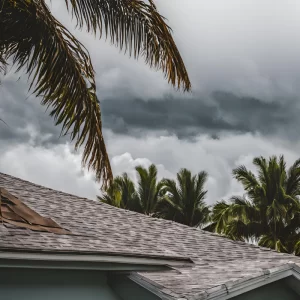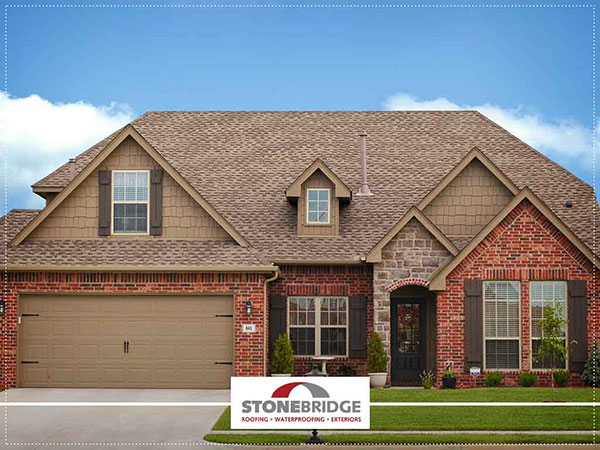
Understanding Your Homeowners Insurance Policy: A Guide from Stonebridge
At Stonebridge Roofing, Energy & Exteriors we know how important it is to keep your roof strong and safe. As a homeowner, it’s key to understand your insurance policy and the state of your roof. Our inspections spot normal wear and tear, keeping your roof in great shape and making insurance claims easy.
What Your Homeowners Insurance Policy Covers
According to Southern Oak Insurance, homeowners insurance policies typically cover a range of events that can cause significant damage to your home. Common covered events include:
 Storms: Damage from hurricanes, windstorms, and other severe weather conditions.
Storms: Damage from hurricanes, windstorms, and other severe weather conditions.- Hail Damage: Significant impact on roofs, windows, and siding.
- Fire: A primary risk covered by homeowners insurance.
- Falling Objects: Damage from falling tree branches or other objects.
- Vandalism: Intentional damage caused by others.
Understanding these covered events is vital for ensuring your policy meets your needs. However, it’s equally important to know what is not covered.
Common Insurance Policy Exclusions
Not all damages are covered by homeowners insurance. Common exclusions include:
- Normal Wear and Tear: Insurance policies typically do not cover damages resulting from normal aging or usage of your home.
- Construction Defects: Issues resulting from poor construction practices are generally excluded.
- Improperly Installed Solar Panels: Solar racks that have penetrated parts of your roof deck potentially void your warranty and affect your coverage.
- Foundation Failure: Structural problems with the foundation are often not covered.
- Pet and Animal Damage: Damage caused by pets or other animals is usually excluded.
- Mold and Fungus: Coverage for mold and fungus is often limited or excluded entirely.
Understanding these exclusions is crucial to avoid unexpected costs. Ignoring common wear and tear conditions on your roof can lead to big problems. If a storm hits, and there is evidence of neglect, you might be left with an expensive problem. Instead of just your deductible, you could end up covering the whole cost of a new roof.
Stonebridge Roofing Inspections: Identifying Normal Wear and Tear
As your roof ages, routine inspections and regular maintenance are important. We provide complimentary inspections to help you identify normal wear and tear, preventing minor issues from becoming major problems. Here’s what we look for:
1. Leaks and Water Damage:
- Active Leaks: Any visible signs of water penetration.
- Staining or Mold: Indications of past or present water intrusion, leading to mold growth or water stains on the ceiling or attic.
2. Structural Damage:
- Sagging Roof Deck: Portions of the roof deck that sag or appear uneven.
- Cracked or Broken Rafters/Trusses: Any signs of damage to the structural supports of the roof.
3. Shingle Issues:
- Missing or Damaged Shingles: Shingles that are missing, cracked, curled, or otherwise damaged.
- Granule Loss: Significant loss of granules from asphalt shingles, indicating aging or damage.
4. Flashing Problems:
- Improperly Installed Flashing: Flashing that is not correctly installed around chimneys, vents, or other roof penetrations.
- Corroded or Missing Flashing: Flashing that is corroded, damaged, or missing altogether.
5. Ventilation and Insulation:
- Blocked or Inadequate Ventilation: Insufficient or obstructed ventilation, leading to heat buildup and potential moisture problems.
- Inadequate Insulation: Insufficient insulation in the attic, leads to energy inefficiency and potential moisture issues.
6. Gutter and Downspout Issues:
- Clogged or Damaged Gutters: Gutters that are clogged, sagging, or otherwise damaged, affecting water drainage.
- Improper Downspout Placement: Downspouts that do not direct water away from the foundation, potentially leading to water damage.
7. Roof Penetration Problems:
- Improperly Sealed Roof Penetrations: Areas around vents, skylights, or chimneys that are not adequately sealed, allowing water to penetrate.
- Improperly Installed Solar Racks: Identify potential issues where solar rack installation has penetrated the roof deck in a way that allows water penetration.
8. Roof Age and Wear:
- Old or Worn Roofing Materials: Roofing materials that have reached the end of their expected lifespan and are showing signs of wear.
- Blistering or Buckling: Shingles or other roofing materials that are blistering, buckling, or otherwise deformed.
9. Debris Accumulation:
- Excessive Debris: Accumulation of leaves, branches, or other debris that can trap moisture and lead to roof damage.
10. Biological Growth:
- Moss, Algae, or Lichen Growth: The presence of moss, algae, or lichen on the roof, which can retain moisture and cause damage.
Cost Comparison: Roof Repair vs. Roof Replacement
In Florida, roof repair for normal wear and tear costs between $300 and $1,000, depending on the damage. On the other hand, replacing the roof on a 3,000 sq ft house costs between $15,000 and $30,000.
Deductibles and the Cost of Ignoring Maintenance
For a $400,000 home with a 2% deductible, the roof replacement deductible is $8,000. However, if your insurance doesn’t cover a claim due to ignored pre-existing damage, you might have to pay for the entire replacement.
Ignoring regular maintenance and inspections can lead to big financial problems. Therefore, it’s always cheaper to fix issues as they come up and keep your home in good shape.
Preventative Measures and Regular Maintenance
Preventive measures and regular maintenance can save you significant money and hassle.
Regular inspections and repairs extend the life of your roof, delaying the need for a costly replacement. We even offer lifespan certifications if your roof is nearing the end of its lifespan and insurance tells you it needs to be replaced. Also, small problems can lead to significant damage if left unaddressed. Lastly, insurance claims may be denied if the damage is due to lack of maintenance.
Knowing your homeowners insurance policy helps you save money and stay protected. Southern Oak Insurance recommends, first, read your policy documents carefully. If there is anything you don’t understand, talk to your insurance agent. It’s their job to keep you informed and work with you. Next, if your roof is more than 10 years old, schedule an inspection and perform regular maintenance. This way, you can avoid costly surprises and keep your home in top shape. Experts like Stonebridge Roofing also ensure your roof lasts longer and stays reliable. Remember, a well-maintained home is both safe and a smart investment.


